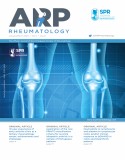Application of the new PRINTO classification criteria for juvenile idiopathic arthritis in a sample of Portuguese patients
Authors
Sara Catarino; Joana Nunes; Sara Ganhão; Francisca Aguiar; Mariana Rodrigues; Iva Brito;
Keywords
Background: The International League of Associations for Rheumatology (ILAR) classification system for juvenile idiopathic arthritis (JIA) does not depict homogenous subgroups of disease. As to unify our language with the adult rheumatic diseases, the Pediatric Rheumatology International Trials Organization (PRINTO) is attempting to revise these criteria.
Objective: To reclassify a JIA sample according to the new provisional PRINTO subsets: systemic JIA (sJIA), RF-positive JIA (RF-JIA), early-onset ANA-positive JIA (eoANA-JIA), enthesitis/spondylitis-related JIA (ESR-JIA), “other JIA” and “unclassified JIA”.
Methods: Retrospective study including JIA patients followed in a Pediatric Rheumatology Unit at a university hospital. Medical records were reviewed, and patients were reclassified as per the provisional PRINTO criteria.
Results: Of a total of 104 patients, 41 (39.4%) were reclassified as “other JIA”, 36 (34.6%) as eoANA-JIA, 15 (14.4%) as ESR-JIA, 8 (7.7%) as sJIA and 4 (3.8%) as RF-JIA. More than 90% of the oligoarticular JIA were reclassified into either eoANA-JIA or “other JIA”. Only one negative RF polyarticular JIA converted to RF-JIA due to the presence of a positive anti-citrulinated peptide antibody (ACPA). The psoriatic arthritis (PsA) subgroup disappeared into eoANA-JIA (25%), ESR-JIA (25%) or “other JIA” (50%). There were significant differences in age of onset, but not on the gender ratio or uveitis presence. Antinuclear antibody was more frequent in females (p=0.035) and younger patients (p<0.001).
Conclusion: The number of affected joints and PsA features elapsed in favour of laboratory RF, ACPA and ANA traits. PsA and oligoarticular JIA were abolished. The “other JIA” entity is heterogenous and prevalent, claiming reformulation.
Sara Catarino
Pediatrics Department, Centro Hospitalar Universitário São João, Porto, Portugal
Joana Nunes
Pediatrics Department, Centro Hospitalar Universitário São João, Porto, Portugal
Sara Ganhão
Pediatric and Young Adult Rheumatology Unit, Pediatrics Department, Centro Hospitalar Universitário São João, Porto, Portugal
Francisca Aguiar
Pediatric and Young Adult Rheumatology Unit, Pediatrics Department, Centro Hospitalar Universitário São João, Porto; Faculty of Medicine, University of Porto, Portugal
Mariana Rodrigues
Pediatric and Young Adult Rheumatology Unit, Pediatrics Department, Centro Hospitalar Universitário São João, Porto; Faculty of Medicine, University of Porto, Portugal
Iva Brito
Pediatric and Young Adult Rheumatology Unit, Pediatrics Department, Centro Hospitalar Universitário São João, Porto; Faculty of Medicine, University of Porto, Portugal
Pediatrics Department, Centro Hospitalar Universitário São João, Porto, Portugal
Joana Nunes
Pediatrics Department, Centro Hospitalar Universitário São João, Porto, Portugal
Sara Ganhão
Pediatric and Young Adult Rheumatology Unit, Pediatrics Department, Centro Hospitalar Universitário São João, Porto, Portugal
Francisca Aguiar
Pediatric and Young Adult Rheumatology Unit, Pediatrics Department, Centro Hospitalar Universitário São João, Porto; Faculty of Medicine, University of Porto, Portugal
Mariana Rodrigues
Pediatric and Young Adult Rheumatology Unit, Pediatrics Department, Centro Hospitalar Universitário São João, Porto; Faculty of Medicine, University of Porto, Portugal
Iva Brito
Pediatric and Young Adult Rheumatology Unit, Pediatrics Department, Centro Hospitalar Universitário São João, Porto; Faculty of Medicine, University of Porto, Portugal





